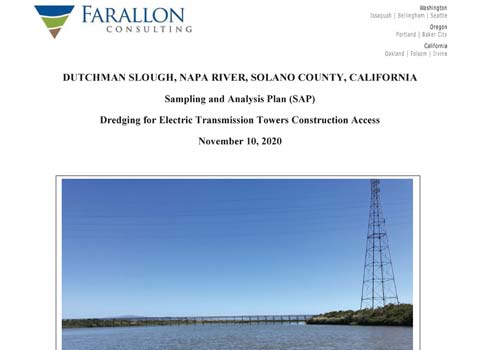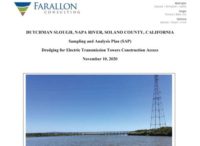Farallon has also evaluated and designed for the beneficial use of dredged materials. We have evaluated the use of this material for island and wetland reconstruction to preserve and improve valuable submerged aquatic vegetation and other important habitat types. Maintenance dredging activities frequently come under intense scrutiny from regulatory agencies, from ports and harbors operators, and from the public. Waterfront owners and operators need access to experienced professionals who can provide effective, insightful, timely, and knowledgeable assistance on regulatory and permitting issues at the international, national, state, and local levels. The Farallon team of regulatory specialists offer clients help navigating the ever-growing and increasingly complex web of local, state, and federal laws and regulations.
Maintenance Dredging Design and Permitting

Approximately 325 million cubic yards of sediment in the U.S. are dredged annually to maintain the economic and beneficial uses of the nation’s navigable waterways. An estimated 12 million cubic yards of this annual volume is believed to be contaminated at levels that require evaluation that can lead to special handling and disposal procedures.
The unit cost associated with maintenance and new construction dredging can be influenced greatly by the presence of contaminated sediment, leading to changes in the dredging approach and scheduling. Farallon works with their clients to minimize costs by identifying sediments that warrant remedial action based on risk reduction. Farallon then applies appropriate technologies, design, and controls in all phases of dredging and disposal operations.
